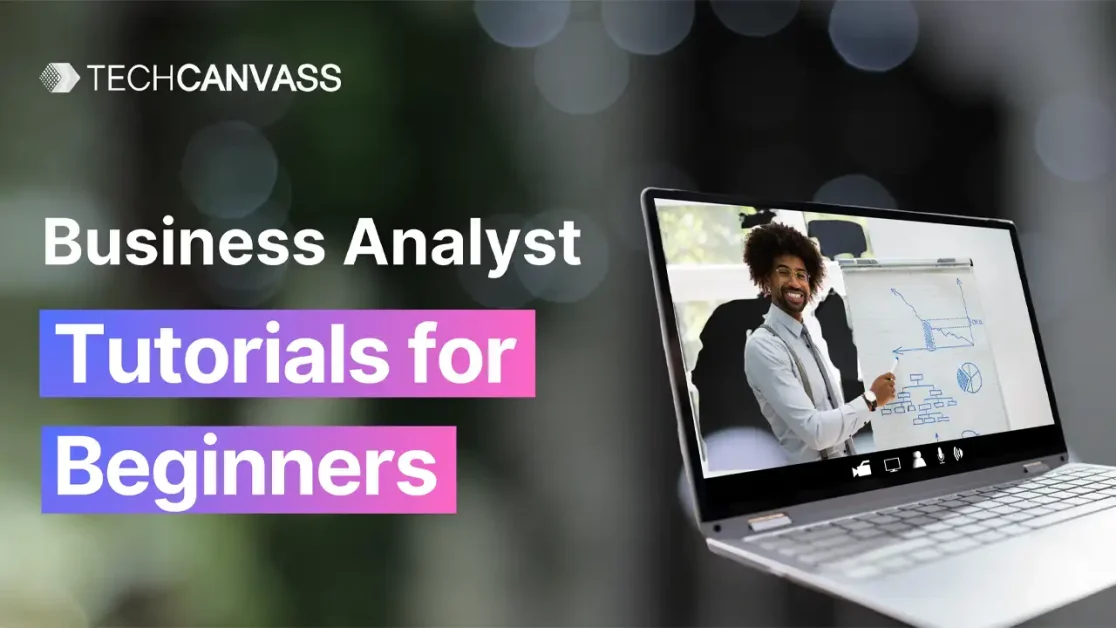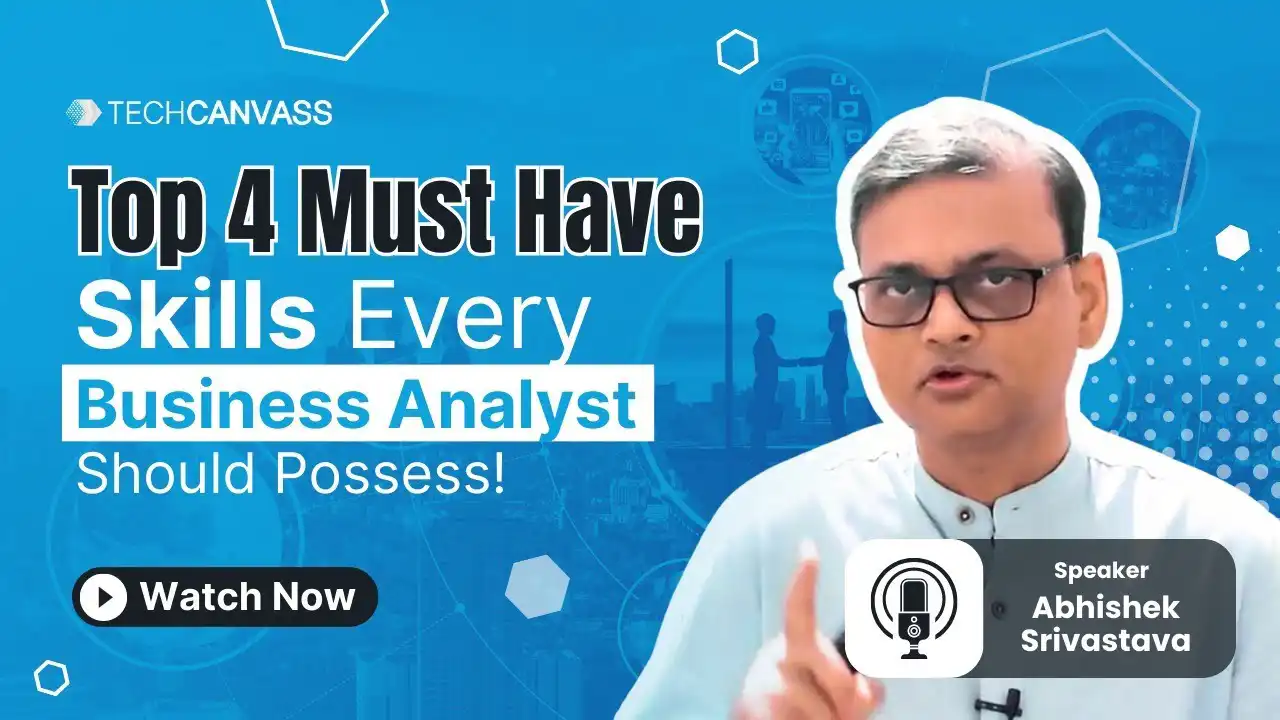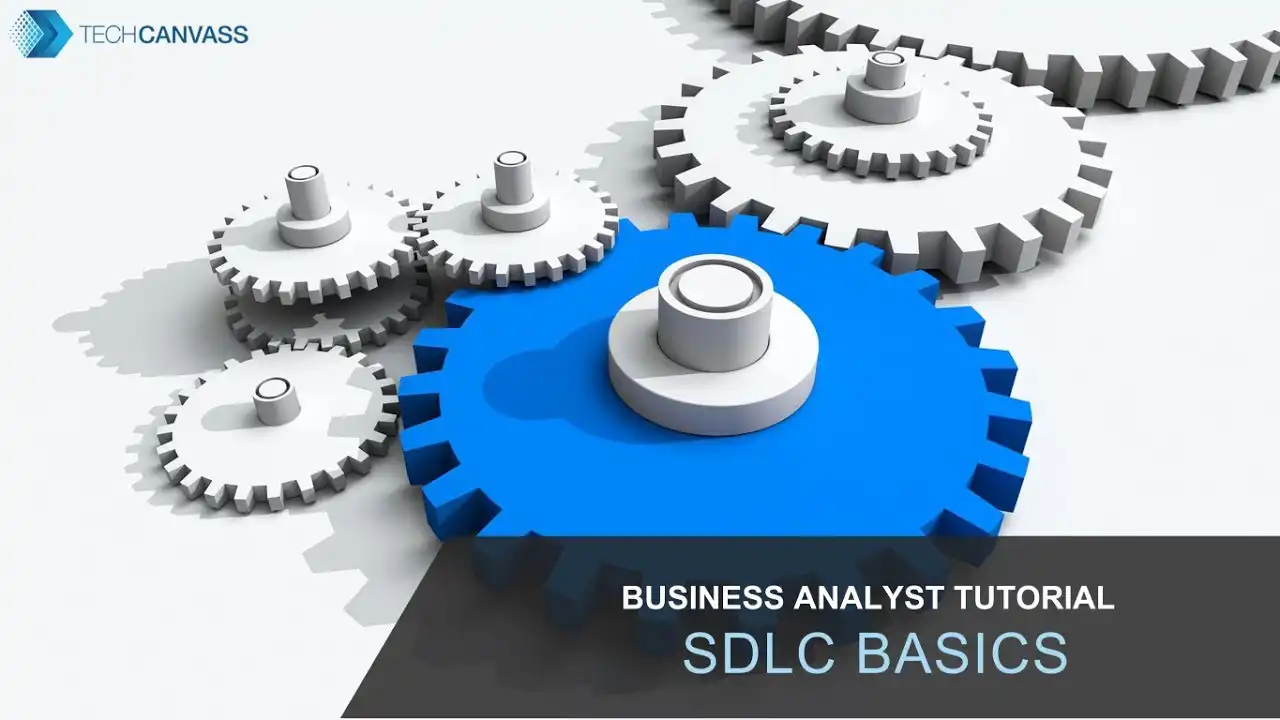Last Updated on October 26, 2025 by Techcanvass Academy
Table of Contents
Welcome to our Business Analysis tutorials for beginners. You can learn the basics of Business Analysis, business analyst role and responsibilities, skills and many other business analysis activities.
The Business Analysis tutorials for beginners comprises of 14 tutorials and covers business analysis basics comprehensively.
Useful Links
Business Analysis tutorials for Beginners
These Business Analysis tutorials have been developed for beginners; you don’t need to have any prior knowledge. The videos in this training series are as shown below:
Business Analyst Tutorials Playlist
- Tutorial 1: What is Business Analysis?
- Tutorial 2: Who is a Business Analyst – What does a Business Analyst do?
- Tutorial 3: Skills for Business Analyst
- Tutorial 4: Understanding Software development process with a case study
- Tutorial 5: Software Development Life Cycle Methodologies (SDLC Basics)
- Tutorial 6: Business Analysis Techniques
- Tutorial 7: What is UML Modelling?
- Tutorial 8: How do Business Analysts handle the requirements?
- Tutorial 9: Verification & Validation
- Tutorial 10: Basics of User Stories
- Tutorial 11: Functional vs. non-functional Requirements with examples
- Tutorial 12: Types of requirements as per IIBA BABOK v3 guide
- Tutorial 13: How to Deal with Difficult Stakeholders?
- Tutorial 14: Business Analyst Interview Questions and Answers
What is Business Analysis?
This is the first video in the Business analysis tutorials series.
In this video, you will learn the concepts of business analysis with the help of a case study involving a ready-to-eat food company facing profitability challenges. As a team is formed to address the issue, the video highlights the integral role of business analysis in strategic decision-making before software development begins. The team, led by a business analyst, engages in requirements elicitation, analysis, and modeling during the development phase, emphasizing the importance of effective stakeholder coordination. Ultimately, the goal is to enable positive organizational change by solving problems and delivering value.
The first video in this business analysis training for beginners series, you learn the most important aspect of business analysis.
Who is a Business Analyst – What does a Business Analyst do?
In this video, we convey an overview of Business Analysis (BA), focusing on the role of a Business Analyst as a liaison between business objectives and technological solutions. It focuses on critical roles such as defining business needs, obtaining requirements, conducting analysis, and encouraging efficient communication between business and IT.
Skills for Business Analyst
This is the third video in the business analysis tutorials series.
In this video, we will discuss the top four essential skills for business analysts in 2023: core BA skills such as requirement capture and documentation, the value of soft skills such as communication and negotiation, the importance of functional testing before customer testing, and the critical role of domain knowledge in effective business analysis. Acquiring domain expertise is highlighted as a means of advancing one’s career.
Useful Links
Understanding Software Development Process with a Case Study
In this video, we will simplify the software development process with a basic scenario in this Business Analyst training for beginners. The trainer simplifies the complexity of software development so that viewers can understand. The emphasis is on providing a clear picture of what happens within the software development lifecycle.
Software Development Life Cycle Methodologies (SDLC Basics)
In this video, you will learn the fundamentals of major software development life cycle approaches. The fundamentals of incremental, iterative, and sequential approaches have been covered.
In the fifth video in Business analysis tutorials series, we have explained the SDLC basics.
Business Analysis Techniques
In the next video in the Business analysis training for beginners series, we will go over some of the most important business analysis techniques, stressing the value of document analysis, requirements elicitation, and a thorough understanding of customer needs. In the context of agile development, it provides use cases and user stories as critical methods for capturing high-level requirements. The importance of process modeling techniques such as flowcharts and data flow diagrams is also discussed.
Useful Links
What is UML Modelling?
In this video, we will introduce UML Modeling concisely, highlighting its significance as a vital technique for business analysts. It presents a simple definition of UML Modeling and demonstrates its wide applicability across several domains.
How do Business Analysts handle the requirements?
This is the eighth video in the business analysis tutorials series.
Business analysts will learn how to properly handle requirements in the context of business analysis principles in this video. The lesson introduces fundamental concepts such as requirement elicitation, documentation, and validation, as well as practical insights into the systematic approach analysts use to gather, document, and assure the accuracy of business needs. Viewers will obtain a basic grasp of the steps required to manage requirements throughout the business analysis process.
Verification & Validation
In this video, we will provide an overview of Verification and Validation, elucidating the fundamental concepts of these activities. It emphasizes the significance of Verification and Validation for business analysts and their role in ensuring the accuracy and quality of project deliverables. The tutorial covers the foundational principles of Verification and Validation, offering insights into how these activities are conducted in a business analysis context.
Useful Links
Basics of User Stories
In this tutorial, we discuss user stories to capture requirements in software development. He outlines the format of a user story, emphasizing its three components: who is performing the activity, what activity is being performed, and why. The tutorial also covers the User Story 3C model, which includes capturing details on a card (user story), engaging in conversations with stakeholders, and defining acceptance test criteria for verification.
Functional vs. non-functional Requirements with examples
In this video, we outline the fundamental concepts of requirements development for business analysts. The tutorial distinguishes between functional and non-functional requirements, providing clear examples to illustrate each category. The content is part of a broader business analysis fundamentals tutorial set, emphasizing the crucial role of understanding requirements in effective business analysis.
Types of requirements as per IIBA BABOK
In this tutorial, we will discuss the classification of requirements based on the Business Analyst Body of Knowledge (BAOBAB) Guide, covering business requirements, stakeholder-specific C requirements, and solution requirements, which include functional and non-functional aspects. The tutorial also emphasizes the importance of transition requirements in managing changes, such as training and data migration, and outlines the requirements development process, starting with business requirements and concluding with acceptance test cases for software acceptance.
Useful Links
How to Deal with Difficult Stakeholders?
In this video, we will discuss strategies for handling difficult stakeholders in project management, addressing scenarios where stakeholders could be more cooperative due to doubts about project viability or issues such as ego clashes and rivalry. The suggested approaches involve understanding stakeholders’ concerns, implementing risk mitigation plans, and escalating issues to sponsors for formal resolution.
Business Analyst Interview Questions and Answers
This is the last video in the business analysis tutorials series.
This video, hosted by Abhishek Srivastava, will provide insights into business analyst interview preparation, covering topics such as the definition of business analysis, key skills required, challenges faced by business analysts, common documents prepared, and essential elements of requirement specifications. It also delves into the techniques for capturing requirements early in a project, the differences between use cases and user stories, and the significance of acceptance criteria, concluding with an overview of key aspects of the Agile approach in the context of business analysis.
Conclusion
And there you have it – a detailed guide to getting started with Business Analysis. These business analysis tutorials are a perfect way to learn Business analysis.
If you are looking to build your career as a Business Analyst, you can check our ECBA Training to get a hands-on and in-depth understanding.












